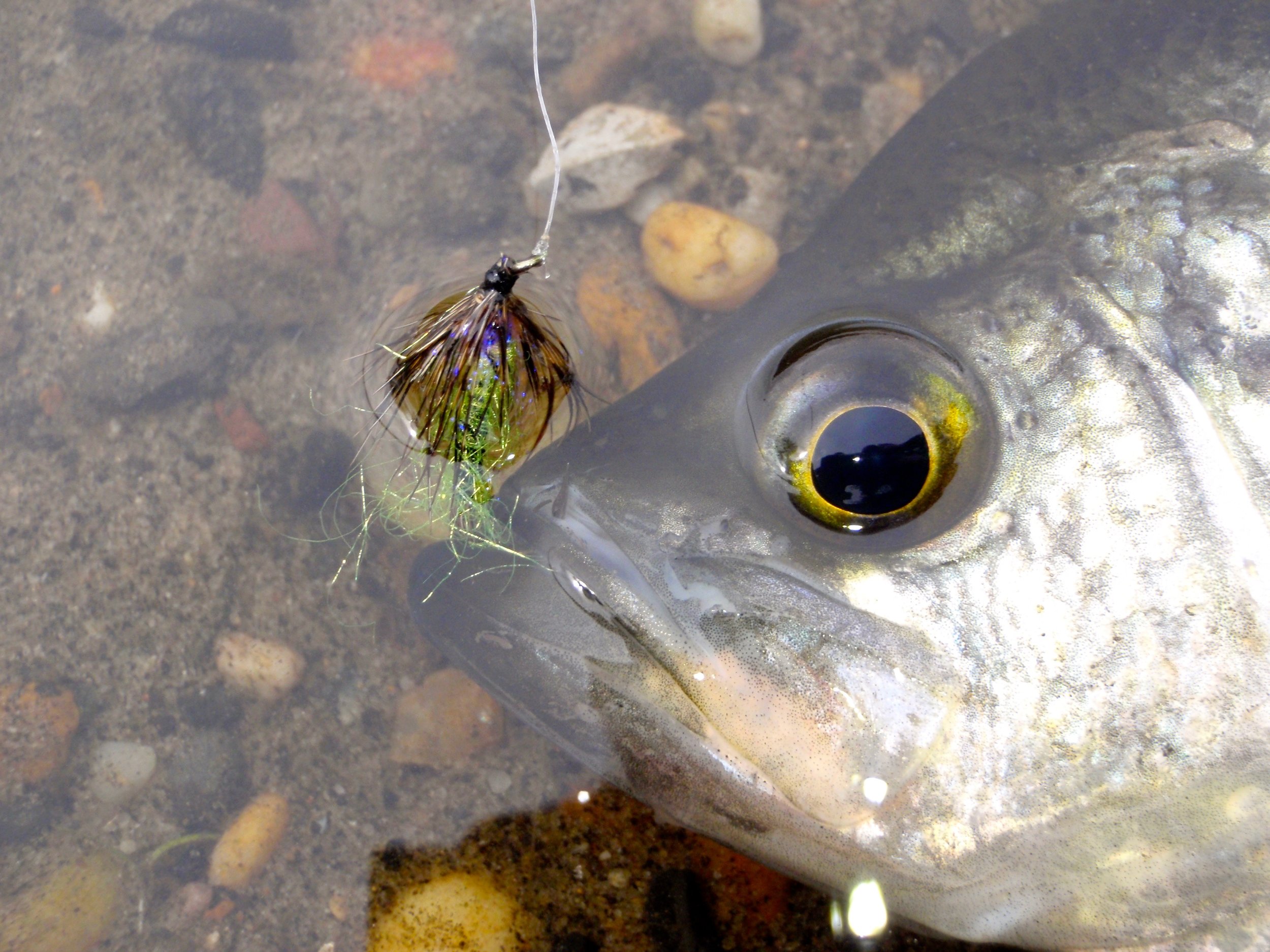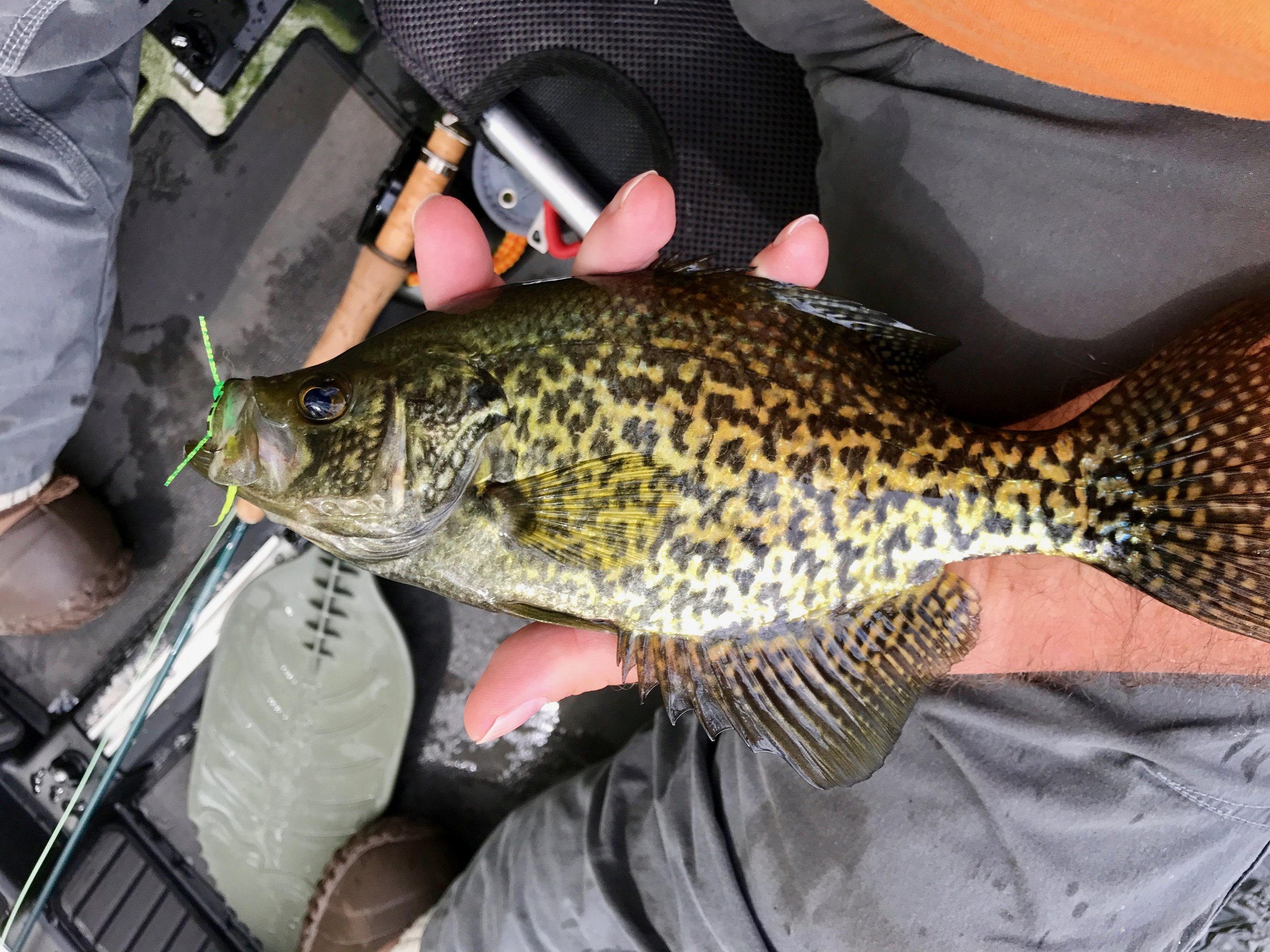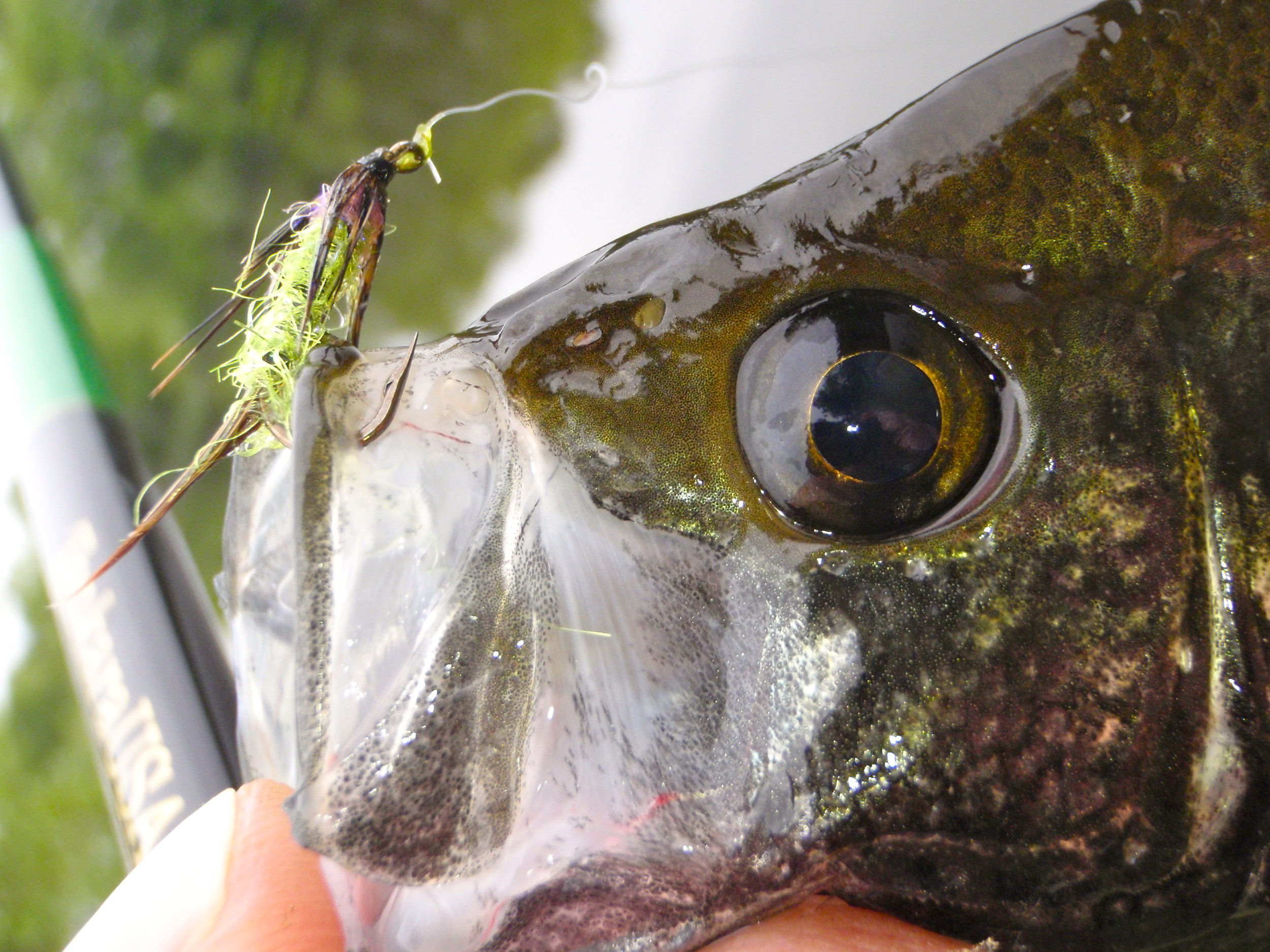When the trees begin to bud out, and winter finally releases its grip on the landscape, my thoughts start drifting towards springtime crappie fishing. All winter long I have been looking forward to fishing the lakes and ponds around my home. Although I am a died in the wool trout fisherman, the nearest quality trout water is over an hour from where I live. With those commuting times, trout fishing becomes a full day commitment. However, I could be chasing crappies and other panfish at over a dozen lakes and ponds within ten minutes of walking out the front door. That being the case, you are just as likely to find me on a warm water pond as you are a trout stream. I am often torn between the two.
Where To Find Early Season Crappies
The crappie is one of the first panfish to become active in the spring. They will enter the shallows to spawn earlier than other species like bass, bluegill, and sunfish. Preferring colder water, they begin actively feeding before other warm water species. The shallow bays of ponds and lakes will be the first to start warming up after ice out. You can expect fish to move into these areas first. Crappies will often hold along the edges of weed beds and submerged timber. You can also find them in reed beds and old lily pad fields, especially early in the season. If your a shore-based angler, weed lines within casting distance of shore and fallen trees will be your best bet. Those fishing from watercraft will naturally be able to access more water and different fish holding structure. These fish show a preference for feeding early and late in the day. Your chances of finding fish will improve if you can get on the water during the early morning and late afternoon hours. My personal preference is the late afternoon right up to sunset.
Although I usually fish subsurface flies for crappie, occasionally they will hit on top, especially once the season progresses and the water begins to warm.
Line and Leader Selection
Since crappies are found in the shallows in early spring, I can get away using a floating fly line for 99% of my fishing. On the rare occasion in late winter or very early spring, I may switch to a sink tip or full sinking line if the fish are holding deep. As I mentioned previously in this article, most of my fishing is done with a four weight rod and line. My usual flies for these early season fish are nymphs and small streamers which are easily handled by a four weight. I resist the temptation to go lighter because I am often dealing with wind early in the year and going lighter will inhibit casting performance. I many cases I am using a sinking leader of varying sink rates depending on where I am fishing. I will attach a short section of 3x tippet to the end of the sinking leader, seldom more than two feet. If the fish are found in very shallow water, a standard 7 and 1/2 foot tapered leader will suffice.
Small streamers like this James Wood Bucktail are deadly on crappie any time of the year!
The Techniques and Flies
Fishing shoreline weed beds can be very productive. During early spring it is usually relatively easy to locate weed beds. I prefer to present my fly to the deepwater side of the bed and allow it to sink to the bottom. After making your cast, watch the line where it enters the water for any suspicious movement. Crappies are notorious for inhaling the fly as it settles to the bottom. If your not paying attention, they can suck in and spit out your offering without you knowing it. Once the fly has settled on or near the bottom, I lift the rod and swim the fly back over the weed bed staying as close to the tops of the submerged weeds as possible. The fish often appear out of nowhere and grab the fly. I often try to present the fly parallel to the bank opposed to retrieving it towards shore. This technique can be a very effective depending on the orientation of the structure that you are fishing. I also look for woody debris like fallen or sunken trees. These can be prime crappie locations in the spring. When fishing submerged trees and other structure like docks and bulkheads casting accuracy is essential. You will need to present your fly as close to the structure as possible. Crappies often hang tight to underwater structure waiting to ambush anything that swims by them.
A fly like this green eyed damselfly nymph would be a good choice for crappies holding in weedy areas.
Crappies readily feed on aquatic insects in the spring so nymphs can be as effective as streamers at times.
As far as flies go nymphs, wet flies and small streamers are all effective. My favorites are small streamers and larger soft hackles. Small streamers can be very effective, primarily when fish are actively feeding on minnows. I like little woolly buggers and hair or feather wing patterns. Crappies also show a fondness for aquatic insects at this time of year. These insects can be imitated by nymphs, wet flies or soft hackles. My go-to insect imitations are damselfly and dragonfly nymph imitations. Large soft hackles and wet flies can imitate both aquatic insects and small baitfish.
Soft hackles do a great job imitating aquatic insects and small baitfish
Crappies are one of the most popular panfish that are sought by many anglers. If you have never tried fishing for them with a fly rod you are missing out on a lot of fun. Give crappies a shot this spring. You will not be disappointed!





